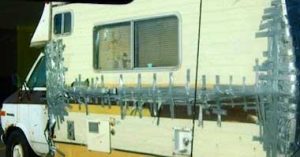 A guy walks into a body shop and asks, “Why is your estimate to fix this dent more than the shop across the street! ??” It sounds a little like the first line of a bad joke; but it’s not funny the number of times I get asked that exact question. Seriously however, that question bears critical merit requiring candid detailed answers to be provided. To better understand answers to that question in the future, you will first need to know what type of information the question should reveal to you.
A guy walks into a body shop and asks, “Why is your estimate to fix this dent more than the shop across the street! ??” It sounds a little like the first line of a bad joke; but it’s not funny the number of times I get asked that exact question. Seriously however, that question bears critical merit requiring candid detailed answers to be provided. To better understand answers to that question in the future, you will first need to know what type of information the question should reveal to you.
Your estimate is comprised of 3 components; parts, labour and taxes. Ironically, taxes are the only part you can precisely calculate; in Ontario add 13% on top – it seldom changes. Parts and labour are where you will notice the differences, and we’re going to break each one down in more detail.
First, parts; their cost at Shop A or Shop B should be within a reasonable variance from one another, so significant price differences warrant further investigation on your part. Generally, it can be attributed to a different part supplier or different part manufacturer. (Note: some aftermarket parts may not be built to the same specifications or tolerances as OEM (Original Equipment Manufacturer) parts, making them more prone to premature wear and premature failure under substantial stress.) When you understand and can quantify the reason for the price difference, the choice of which parts you’d prefer to have used will be an informed one when made. But we already know that sourcing the highest quality parts guarantees your safety and the longevity of the repair; especially considering the repairs are to larger, more heavily loaded vehicles synonymous with RVing.
Labour however, is where you will usually notice the difference. Calculating labour properly requires experience-based insights, after all, they’re guestimating the man-hours that will be required to complete the repair. But even a $10/hr difference in shop rates would only account for a small discrepancy, $100 or so depending on the scope of the repair. Logically then, it comes down to how many hours will be spent on the repair. For example, a $1000 difference between two estimates, at a shop rate of $75/hr, is over 13 hours of labour. To put that into perspective ask yourself, should repairs be like fast food restaurants, where they justifiably sell slapped-together, falling-apart burgers at low prices? Or, should a repair be afforded the same finesse and attention an experienced chef would give to a Porterhouse Steak! Because a repair can be slapped-together 13 hours faster, doesn’t necessarily mean you want it that way. We recognize however, that quality work takes time, so we don’t rush through any of our repairs. We fix your RV the way we would fix one of our RV’s, ensuring our repairs are travelling advertisement of great craftmanship, not falling-apart as slapped-together often will. So now understanding the reason for any significant variances in labour, you will be able to make an informed decision to ensure you receive the quality you require.
Summing up, there are rational reasons for differences between estimates from different shops. So, make sure you understand exactly what each estimate entails, as they are probably not the same repair. The difference between two estimates is “getting what you paid for” and “getting what you didn’t pay for.”
By the way, the punchline if it were a joke might be “Sir, the shop across the street are the ones that put THAT dent there.” GROAN
